Design with Care: An Act of Social and Cultural Sustainability
Written by Simon Kincaid, Partner and Principal at Conran and Partners
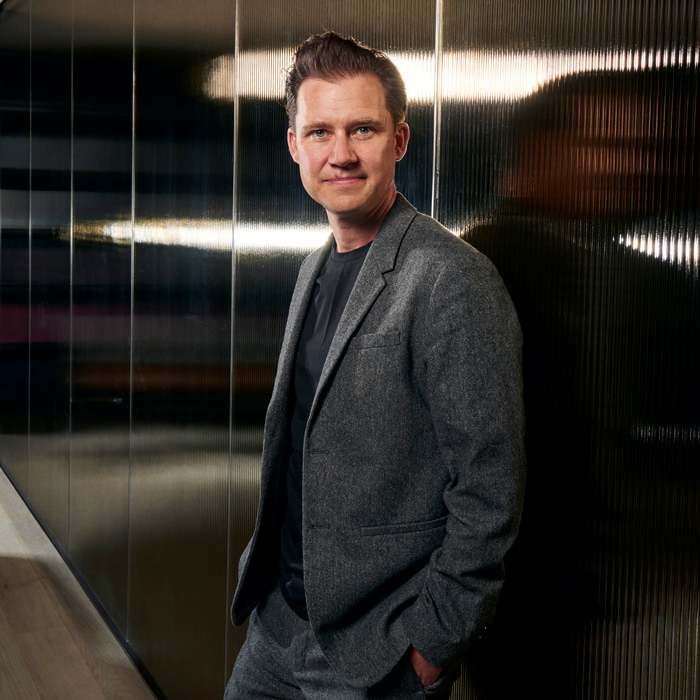
Simon Kincaid, Partner and Principal at Conran and Partners
Whether we are talking about hospitality or the workplace, the concept of care is a guiding principle that shapes interior designs. Even before diving into the design process, we show care through the terminology we use to describe the end user, referring to them as guests, employees, customers, or residents. This creates a level of personification and connection to those who are welcomed into, stay within, and experience the spaces.
Designers must always care for functional, environmental, sensorial, and emotional needs. Understanding the diverse needs and crafting environments that respond to them is what distinguishes a well-designed space from a mere aesthetic one.
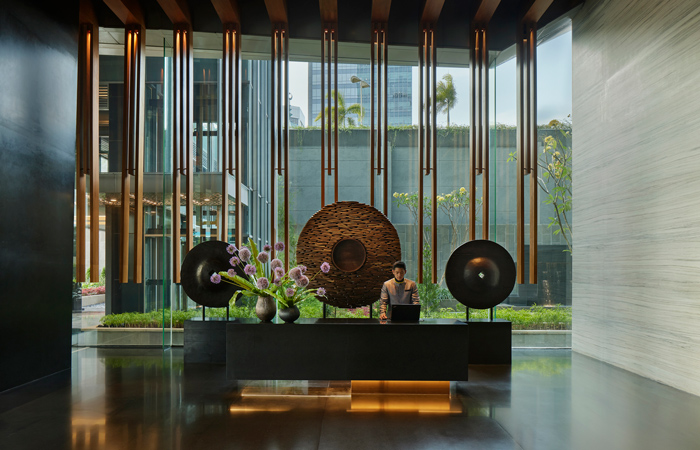
Park Hyatt Jakarta Concierge
However, care is not always evident to the eye. It is typically more subtle and embedded into a design scheme than it may appear. From layout to materials, lighting, acoustic and colour, our decisions are not simply aesthetic; they are a means of crafting an environment that fosters well-being, above and beyond the baseline or the expected.
Impressions are crucial, and the arrival experience sets the tone for how individuals feel about a space. In hospitality, this often begins at even before the lobby—a carefully curated space designed to evoke a sense of welcome. This welcoming environment creates an emotional connection; guests feel acknowledged and valued, with their individual needs noted and appreciated. Similarly, in the workplace, a thoughtfully designed lobby can foster a sense of belonging, making employees feel like integral parts of a community from the moment they step through the door.
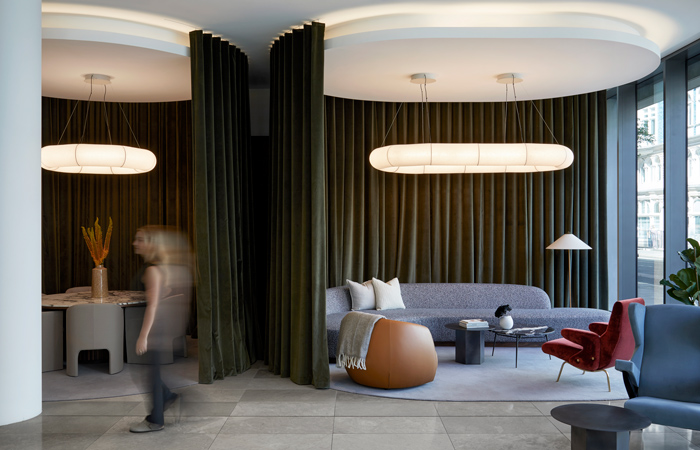
45 Mortimer Street. Image by Anna Stathaki
When it comes to lobbies, striking the balance between public, semi-private, and private spaces is key in all settings, both in offices and hotels. A good example is our design for a lobby at 45 Mortimer Street, where we crafted a series of flexible spaces using soft partitions to create semi-private areas for client meetings or individual work. These semi-enclosed spaces allow employees to focus while being part of a shared experience and community. At Author – a new BTR development in King’s Cross where we designed the amenity spaces – we opted for bold finishes and vibrant colours in social spaces to inspire interaction among residents, while the colour palette is muted and neutral in spaces that require focus and calm, such as the co-working area.
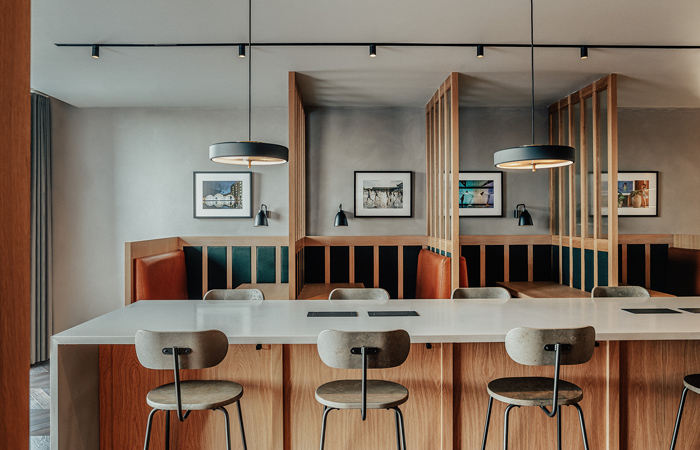
Author. Image by Taran Wilkhu
Yet, while both hospitality and workplace settings focus on the initial encounter, the layers of care deepen as we consider the differences in experience. In hospitality, guests may only stay for a few hours, yet our design must cater to their desire for comfort and ease and forecast for the unexpected. In contrast, workplaces are often seen as second homes. This necessitates a more careful approach, balancing privacy with community and ensuring that spaces can be both collaborative and contemplative.
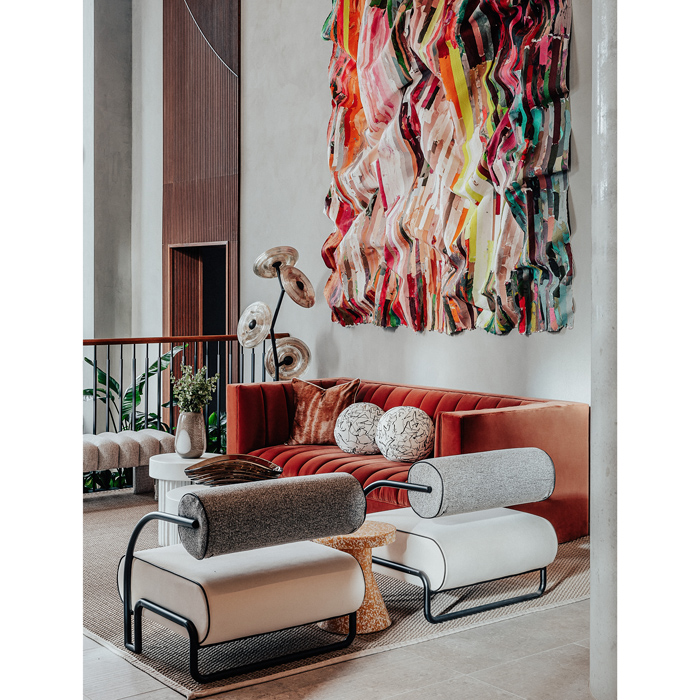
Author. Image by Taran Wilkhu
One aspect that often goes unnoticed in discussions about care in design is the significance of back-of-house spaces. Staff areas must be as thoughtfully designed as the guest areas; providing high-quality, functional spaces for staff not only ensures operational efficiency but also demonstrates a commitment to the people behind the service. A well-functioning back-of-house has a direct impact on the final experience. By optimizing the flow and functionality behind the scenes, we ensure that staff can efficiently deliver high-quality service, allowing the front-of-house spaces to remain inviting and seamless for guests.
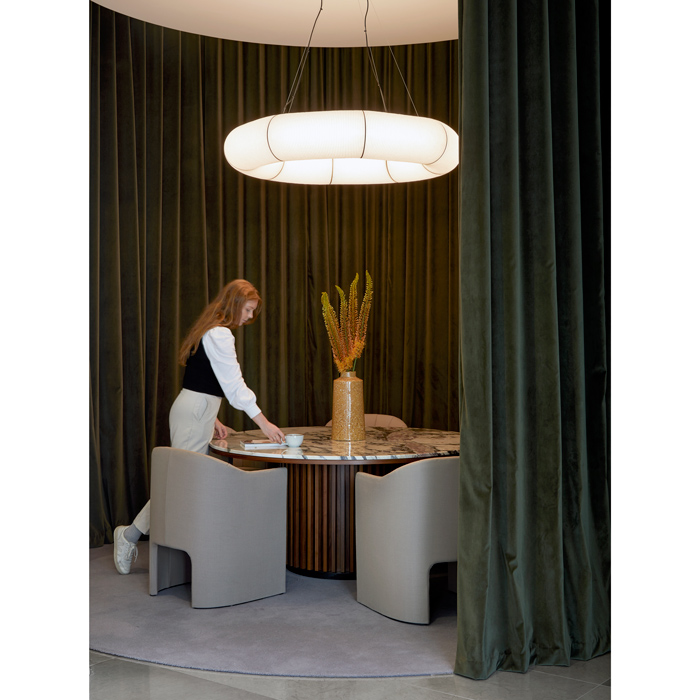
45 Mortimer Street. Image by Anna Stathaki
Lastly, our designs must reflect a care for cultural and social sustainability as much as environmental stewardship, with the objective of securing people’s socio-cultural and spiritual needs in an equitable way. It’s about making buildings and communities that are not just environmentally sustainable but are also inclusive, healthy, and not intimidating for anyone regardless of their cultural and social background.
Ultimately, the act of care in design is about creating experiences that resonate on a personal level. In hospitality, we aim to provide memories that linger long after a guest has checked out. In the workplace, our goal is to create a space that employees look forward to returning to each day. Not only – thought, care and personalisation can lead to repeat visits to hotels, extended leases in rental products and retention in the workplace. By focusing on caring for the individuals who occupy these spaces, we foster a culture of connection and belonging.




